WELCOME TO HERB CAMP 2020! In this third of three weeks of herb camp, the theme is “Herbal Creativity” In this final week of herb camp we’ll explore ways to use your garden herbs creatively. In today’s Herb Camp Challenge we’re exploring herbs and pollinators.
Pollinators are a very integral part of your successful herb garden. Pollinators ensure that the herbs, fruits, and vegetables produce their fruit and seed at the right time. A pollinator friendly herb garden will also have the right balance of predatory insects to keep plant damage from pests in balance. Many predatory insects are also pollinators. For more about predatory insects see this post on Joybilee Farm.

Monarch butterfly drinking nectar from a knapweed blossom.
Many medicinal herbs rely on pollinators in order to produce their medicine. Elderberry, hawthorn, goji berries for instance, need pollination for fruit. Other herbs rely on pollinators to reproduce so that you will have seeds to plant next year. Many of the asteraceae family need pollinators to reproduce. By design these flowers have abundant nectar and pollen to reward the pollinators who visit their blooms.
How do you ensure that your garden is pollinator friendly?
Consciously choose to support pollinators in your garden planning
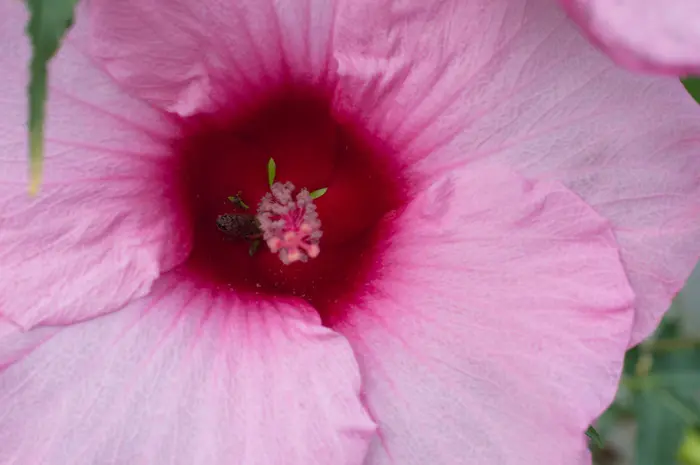
Do you see her in the throat of this hibiscus flower? She’s covered in pollen.
Characteristics of a pollinator friendly garden
- Protected water source for small insects
- Sugar syrup available for hummingbirds or bees
- Pollen rich and nectar rich flowers throughout the growing season
- Herbs that are allowed to flower before harvesting
- Flowering trees that are rich in both nectar and pollen during the growing season
- Bee houses and nesting sites for pollinators
- Organic garden – No poisonous sprays
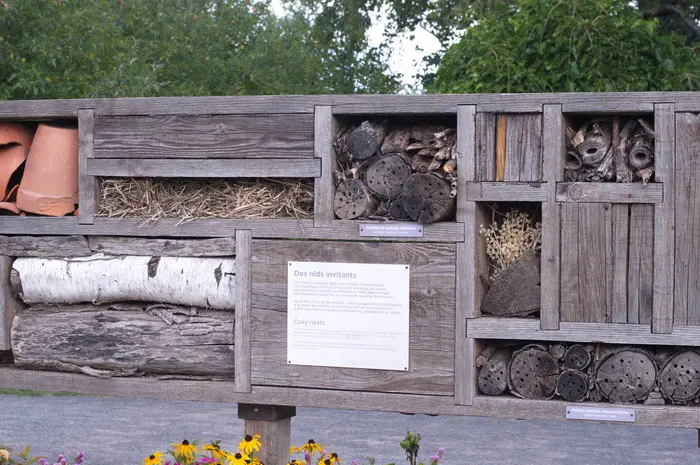
Solitary bee nesting site at the Montreal Botanical Garden, Montreal, Canada
Today’s challenge:
-
Map the blooming plants in your garden or neighborhood from January to December.
Whats in bloom each month. Is it pollinator friendly, providing both nectar and pollen? Make a list and see when you have an abundance of pollen and nectar sources in bloom.
For instance many hybrid flowers are bred to be pollen-less, although they are a source of nectar. Some bees and other pollinators use pollen as a source of protein while nectar provides carbohydrates. A garden full of pollen-less hybrid flowers, like hydrangeas and hybrid sunflowers don’t provide the nutrition pollinators need.
Deciduous trees also provide pollen and nectar. For instance willow trees and maple trees are important early spring sources of nectar for pollinators, including honey bees.
Do you have a period of dearth — a time when there are no blooming plants with pollen and nectar in your area? What can you plant in your garden to support pollinators during the dearth, and keep them near your garden, for when you need them. It doesn’t have to be in your garden. It could be on a parking strip in the front of your house, or a vacant lot nearby that’s begging to be seeded with clover. Guerrilla gardeners plant on vacant land to ensure that both humans and pollinators have food to eat.
2. Is there anything else you can add to your garden to make it more pollinator friendly?
I had a broken stainless steel frying pan that was missing it’s handle. I repurposed it as a water source for pollinators by adding pine cones and glass stones in the bottom to keep bees from drowning in the water. Then I half-filled it with water. The bees, butterflies, and hummingbirds visit it throughout the day. I only need to add more water if we haven’t had rain in a week.
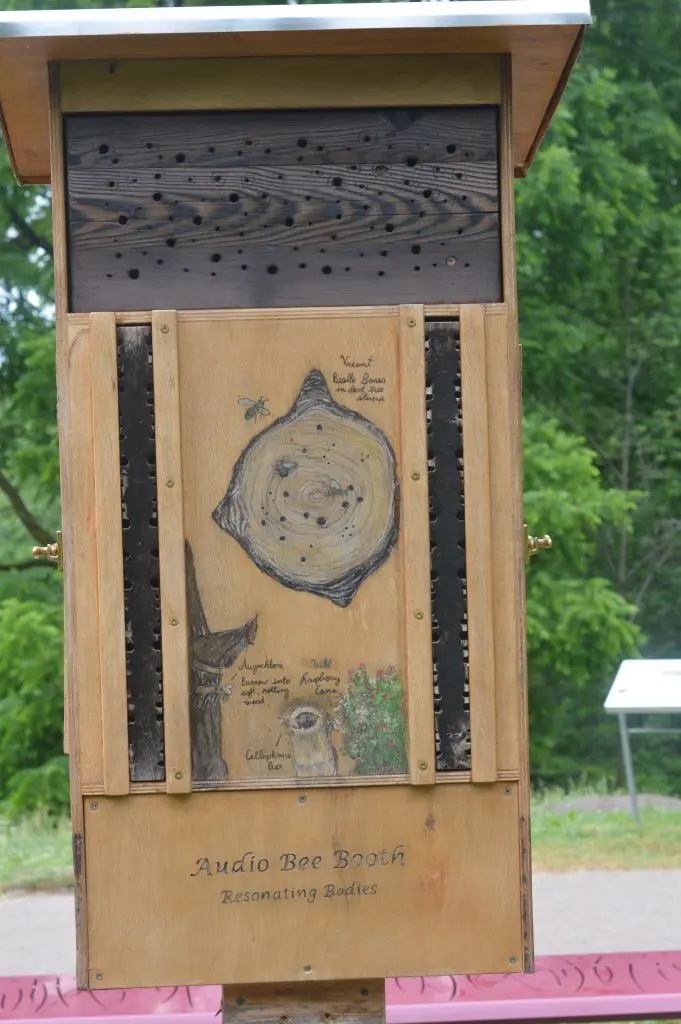
A solitary bee nesting site at the Royal Botanical Gardens, near Hamilton, Ontario Canada
Adding a bee house for native pollinators can provide nesting sites and over wintering protection for at risk pollinators.
What one thing can you do to make your garden or community more pollinator friendly this summer? Pick one thing and let us know what it is in the comments to this post OR in the Facebook group.
Note: Click the small arrow on the LEFT to go to the previous day’s Herb Camp Challenge. Click the small arrow on the RIGHT to go to the next day’s Herb Camp Challenge.
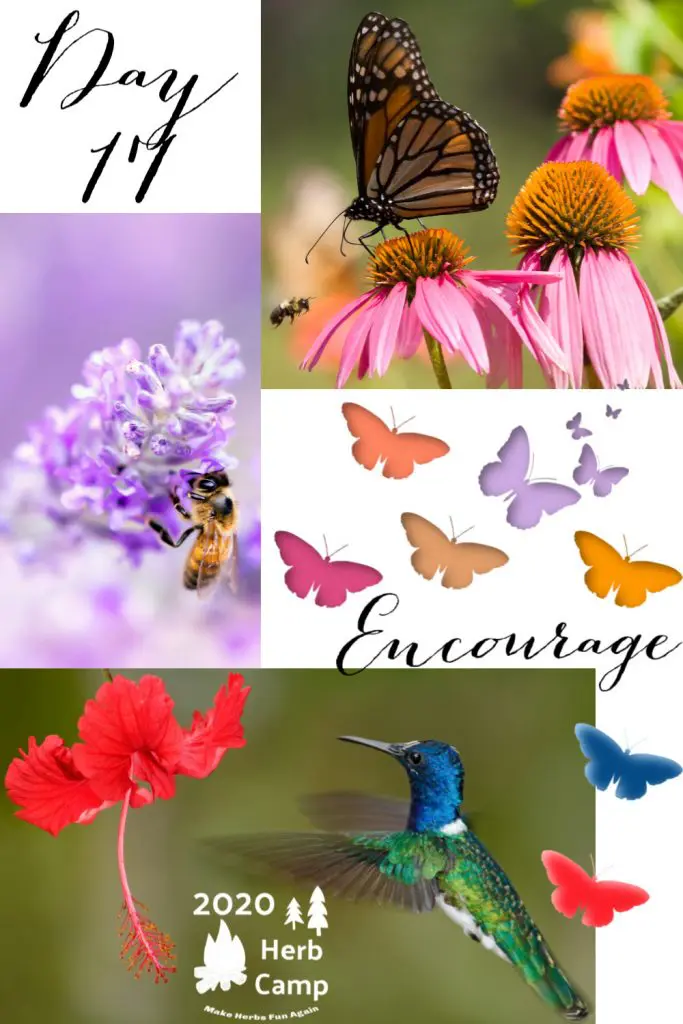
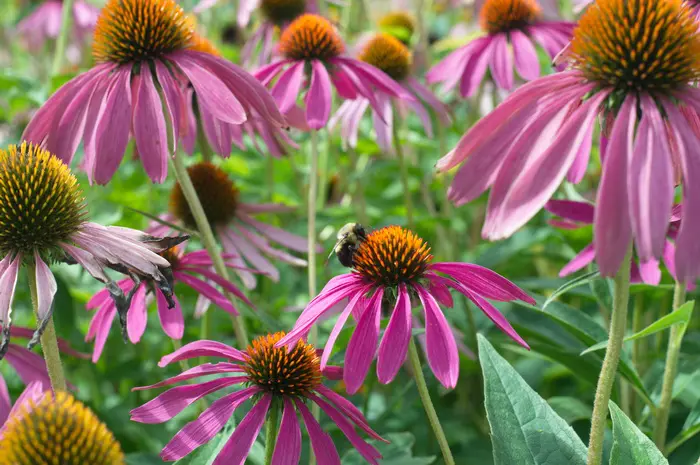
We have a water feeder out in my herb garden for the bees and a fountain in the front of our house that has rocks and a pond with rocks around it that the bees like to drink from.
I do need to plant more pollinator plants..
We changed one of our bird baths to make it easy for pollinators by adding quite a few river rocks and then keeping a low level of water in it. That way they have plenty of stones to keep them out of the water. I also have a couple of shallow dishes in different areas of the yard, just for this purpose
I have water in 3 of my beds plus 2 other shallow birdbath with rocks. I sowed white clove in my moon garden area so as not to mow and for pollinators. I also have a pollinator planter that includes a pollinator nesting area. I use no insecticides.
I can’t find the facebook post for this one, so I will comment here. I commit to making a better watering spot for bees, butterflies, etc. I have been meaning to do that. I sometimes find bees floating in the duck/chicken waterers and I know they need a better shallow spot. I have a hummingbird feeder, so they are good.